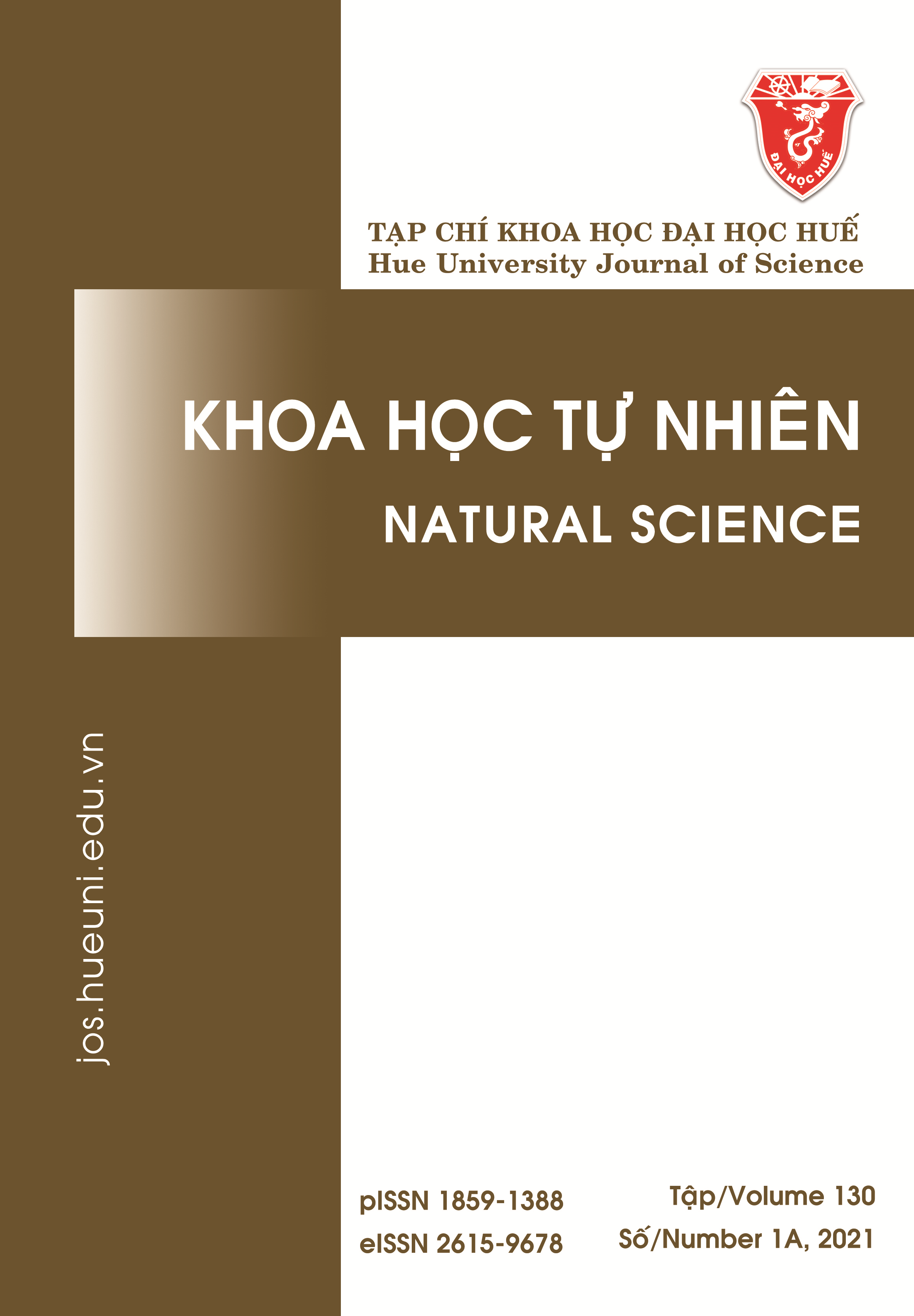Abstract
This study assesses the influence of solution pH, biochar dose, reaction time, and initial nitrate concentration on the nitrate adsorption in aqueous solutions by biochar prepared from rice husks (O. sativa L., OM5451). The biochar was prepared with the pyrolysis method at 700 °C. The pHpzc of the biochar is 9.51. The optimal conditions for the adsorption process include biochar 0.5 g, pH = 4, time 120 minutes, and initial concentration of 50 . Under the optimal conditions, the nitrate removal efficiency is 69.7%. The adsorption equilibrium data are more consistent with the Langmuir isothermal model ( = 0.993) than the Freundlich isothermal model ( = 0.965), and the maximal nitrate adsorption capacity of the biochar, calculated from the Langmuir equation, is 12.843 mg·g–1. The adsorption of the biochar fits well with both the pseudo-first-order kinetic model ( = 0.964) and the pseudo-second-order kinetic model ( = 0.963).
References
- Nữ PV, Nga BT, Izumi T. Sử dụng nước thải túi ủ biogas có vật liệu nạp là phân heo và bèo tai tượng (pistia stratiotes) canh tác cây ớt (capsicum frutescens l.). Tạp chí Khoa học Trường Đại học Cần Thơ. 2015;35-40.
- Tổng cục thống kê Việt Nam. Diện tích và sản lượng lúa cả năm, Số liệu thống kê nông, lâm nghiệp và thủy sản. Hà nội: Nxb Thống kê; 2016.
- Budai A, Wang L, Gronli M, Strand LT, Antal MJ, Abiven S, et al. Surface Properties and Chemical Composition of Corncob and Miscanthus Biochars: Effects of Production Temperature and Method. Journal of Agricultural and Food Chemistry. 2014;62(17):3791-9.
- Basso AS, Miguez FE, Laird DA, Horton R, Westgate M. Assessing potential of biochar for increasing water-holding capacity of sandy soils. GCB Bioenergy. 2012;5(2):132-143.
- Cường TV. Nghiên cứu ứng dụng than sinh học từ phụ phẩm cây lúa để cải tạo môi trường đất xám bạc màu [Luận án], Hà Nội: Trường đại học khoa học tự nhiên - ĐHQG Hà nội; 2015.
- Nguyen LX, Do PTM, Nguyen CH, Kose R, Okayama T, Pham TN, et al. Properties of Biochars Prepared from Local Biomass in the Mekong Delta, Vietnam. Bioresources. 2018;13(4):7325-7344.
- Balistrieri L, Murray J. The surface chemistry of goethite (alpha FeOOH) in major ion seawater. American Journal of Science. 1981;281(6):788-806. DOI: https://doi.org/10.2475/ajs.281.6.788
- Zubair M, Mu’azu ND, Jarrah N, Blaisi N, Aziz HA, Al-Harthi MA. Adsorption behavior and mechanism of methylene blue, crystal violet, eriochrome black t, and methyl orange dyes onto biochar-derived date palm fronds waste produced at different pyrolysis conditions. Water Air and Soil Pollution. 2020;231(5). DOI: https://doi.org/10.1007/s11270-020-04595-x
- Al-Zoubi H, Zubair M, Manzar MS, Manda AA, Blaisi NI, Qureshi A, et al. Comparative adsorption of anionic dyes (eriochrome black t and Congo red) onto jojoba residues: isotherm, kinetics and thermodynamic studies. Arabian Journal for Science and Engineering. 2020;45(9):7275-7287. DOI: https://doi.org/10.1007/s13369-020-04418-5
- Bedia J, Peñas-Garzón M, Gómez-Avilés A, Rodríguez J, Belver C. A review on synthesis and characterization of biomass-derived carbons for adsorption of emerging contaminants from water. Journal of Carbon Research. 2018;4(4):63. DOI: https://doi.org/10.3390/c4040063
- Tan X, Liu Y, Zeng G, Wang X, Hu X, Gu Y, et al. Application of biochar for the removal of pollutants from aqueous solutions. Chemosphere. 2015; 125:70-85.
- Mai VT, Tuyên TV. Nghiên cứu khả năng xử lý amoni trong môi trường nước của than sinh học từ lõi ngô biến tính bằng H3PO4 và NaOH. Tạp chí Khoa học ĐHQGHN. 2016;32(1S):274-81.
- Chintala R, Mollinedo J, Schumacher TE, Papiernik SK, Malo DD, Clay DE, et al. Nitrate sorption and desorption in biochars from fast pyrolysis. Microporous and Mesoporous Materials. 2013;179:250-7.
- Zhao H, Xue Y, Long L, Hu X. Adsorption of nitrate onto biochar derived from agricultural residuals. Water Science and Technology. 2017;77(2):548-554. DOI: https://doi.org/10.2166/wst.2017.568
- Yang L, Yang M, Xu P, Zhao X, Bai H & Li H. Characteristics of Nitrate Removal from Aqueous Solution by Modified Steel Slag. Water. 2017;9(10):757. DOI: https://doi.org/10.3390/w9100757
- Fidel RB, Laird DA, Spokas KA. Sorption of ammonium and nitrate to biochars is electrostatic and pH-dependent. Scientific Reports. 2018;8(1). DOI: https://doi.org/10.1038/s41598-018-35534-w
- Deveci H, Kar Y. Adsorption of hexavalent chromium from aqueous solutions by bio-chars obtained during biomass pyrolysis. Journal of Industrial and Engineering Chemistry. 2013;19(1):190-6.
- Uddin MT, Islam M, Islam MA, Abedin M. Uptake of phenol from aqueous solution by burned water hyacinth. Polish Journal of Chemical Technology. 2008;10(2):43-9. DOI: https://doi.org/10.2478/v10026-008-0027-1
- Divband Hafshejani L, Hooshmand A, Naseri AA, Mohammadi AS, Abbasi F, Bhatnagar A. Removal of nitrate from aqueous solution by modified sugarcane bagasse biochar. Ecological Engineering. 2016;95:101-111. DOI: https://doi.org/10.1016/j.ecoleng.2016.06.035

This work is licensed under a Creative Commons Attribution-ShareAlike 4.0 International License.
Copyright (c) 2021 Array




